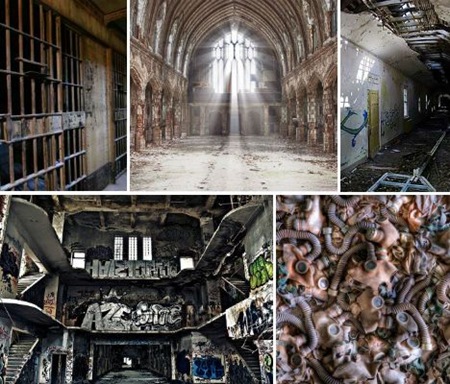
Churches, prisons, psychiatric hospitals and courthouses given over to the elements can sometimes taken on a mythic significance, given a haunting, creepy beauty by the passage of time. Removed from their former functions, these institutional buildings become both architectural skeletons and snapshots of human activity, frozen in time. In their emptiness, the echoes of past patients, prisoners and parishioners seem louder than ever.
1. Carabanchel Prison, Spain
Images via: alex//berlin_alexander stübner
One of the biggest prisons in Europe until its closure in 1998, Madrid’s Carabanchel Prison was built by political prisoners after the Spanish Civil War between 1940 and 1944. During the ten years of its abandonment, the prison was inhabited by homeless people and other marginal groups, and covered in elaborate graffiti. Despite its historical significance and the protests of many locals, the prison was demolished in 2008.
It represented one of the most impressive examples of the repressive panopticon design, which allows a watchman to observe all inmates without them knowing when they’re being watched. The panopticon arrangement was initially envisioned not just for prisons, but also for hospitals, sanitariums and daycares.
2. St. Agnes Church, Detroit, USA
Images via: memories_by_mike 1 2, erik_mauer
Abandoned in 2006 due to financial troubles, Detroit’s St. Agnes church remained in fairly good condition for three years, though it had been stripped to its bare bones. Even once all of the organ pipes, chandeliers and stained glass windows were gone, the church displayed much of its old grandeur.
But the structure underwent a striking transformation in 2009, when leaks in the roof led to extensive water damage and mould, causing the masonry to crumble. Textural details are revealed in stark contrast by a black grime of dirt and mould. Today, the church looks like much of the rest of Detroit; it has been looted and vandalized to the point of being unrecognizable.
3. Gartloch Mental Hospital, Scotland
Images via: strike4th, bigcagwell, justified sinner, skin-ubx 1 + 2
In service for over a century, Gartloch Hospital is a sprawling Victorian complex located just outside the city of Glasgow, Scotland. From the time of its opening in 1889, it served as an asylum for the poor people of the city. Though its primary purpose was as a psychiatric hospital, it temporarily served as an emergency medical facility during World War II. It was the subject of many a Scottish ghost story long before it closed in 1996, and today its dark, empty hallways feel more haunted than ever.
4. Hellingly Asylum, Sussex, England
Images via: howzey
Has any creepy old mental hospital ever been more fittingly named? Hellingly Asylum in Sussex, England opened in 1903 to relieve overcrowding at other institutions during a time in which people could be thrown into hospitals for the rest of their lives for being gay or having a child out of wedlock. Located on 400 acres, the complex included sex-separated wards, a villa for ‘mentally defective’ children, and a small isolation hospital for infectious diseases, which stood in the woods at some distance from the rest of the buildings. The hospital even had its own electric tramway.
Hellingly closed in 1994 and most of its buildings fell into rapid decline. Fires, vandalism and theft took their toll. Medical equipment and furniture could still be seen among the ruins during the years in which the only people who ever entered were urban explorers, graffiti artists, photographers and people with questionable intentions.
Today, only a few buildings remain. Most have been demolished to make way for new housing.
5. Abandoned Schools of Pripyat, Ukraine
Images via: tim seuss
Founded in 1970 as a home base for Chernobyl nuclear power plant workers and their families, Pripyat is now the world’s most potent symbol of the destructive power these facilities struggle to contain. The small city in Northern Ukraine is an infamous ghost town, abandoned in minutes, with the signs of sudden upheaval visible at every turn. It had a population of about 50,000 before the Chernobyl disaster occurred in 1986. Though still dangerous, the radiation levels have abated enough to allow tours through its streets and some of its buildings.
The schools of Pripyat are among its most jarring remains [see here as an example]. Sheet music litters the ground near pianos. Books are scattered over every surface of the libraries. Life is frozen to display an odd slice of the mid-1980s, in what would have been a rather unremarkable Soviet town. To Westerners and those of younger generations, the sight of gas masks littering the floors of the schools may be the most jarring of all, but anyone who lived through that time in a Soviet country may remember gas masks being part of regular drills. To these children, they were as ordinary as pencils and paper.
6. Bronx Borough Courthouse, New York City, USA
Images via: wikimedia commons, wired new york
A Beaux Arts beauty in the Bronx borough of New York City, this courthouse was built between 1905 and 1915 and housed Supreme, Surrogate’s and County Courts until 1934. It was occupied by the Bronx Branch of the New York City Criminal Court until 1977, and served as home base to various community groups in the ensuing years between periods of abandonment. Today, however, it’s once again empty. Though being made of granite and marble protects it from deterioration to some degree, it’s still showing signs of disrepair. Because it was designated as a historic landmark in 1981, it can’t be destroyed. It went on the market for just $130,000 in the 1990s, but the estimated cost of refurbishing its interiors was over $40 million.
But it won’t be empty for much longer. The cells of the courthouse are set to be turned into school rooms, as the building becomes an 800-student charter school.
7. City Methodist Church, Gary, Indiana, USA
Images via: joeyblsphotography, lindspetrol, josh koonce,
City Methodist Church is one of the most striking abandonments in Gary, Indiana, a city that is still populated with over 80,000 residents but largely retains the feel of a ghost town. Located in the southeastern portion of the Chicago metropolitan area, Gary lost a large percentage of its population in a damaging combination of white flight, economic distress, skyrocketing crime and the decline of the steel industry, which was a major source of jobs.
The church was among the buildings in downtown Gary that were damaged by a fire in 1997. Abandoned since 1975, the church is nine stories tall, and has been featured in many movies including Nightmare on Elm Street and Transformers 3. Though most of its stained glass windows have been looted or broken, the ones in the highest reaches of the church still remain.
Related Posts:
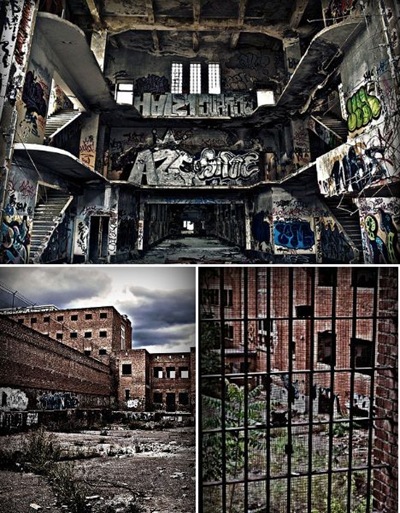
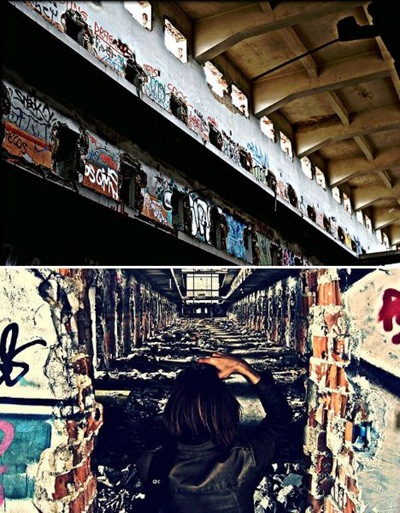
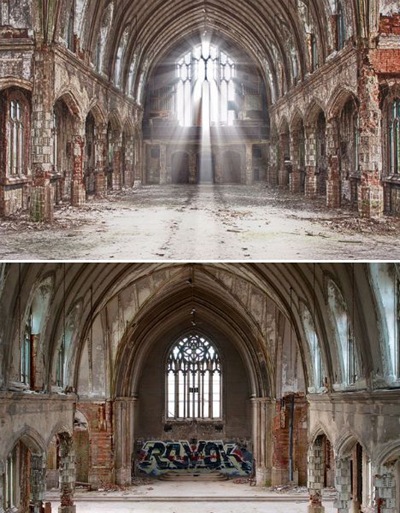
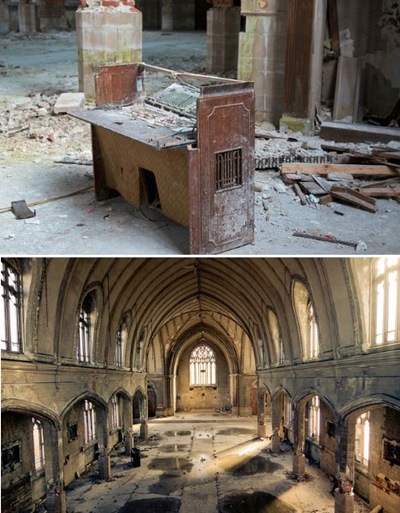

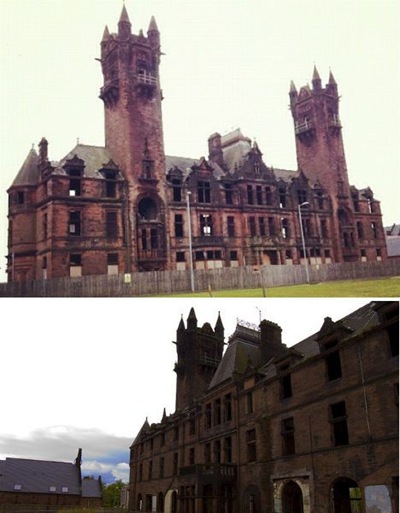

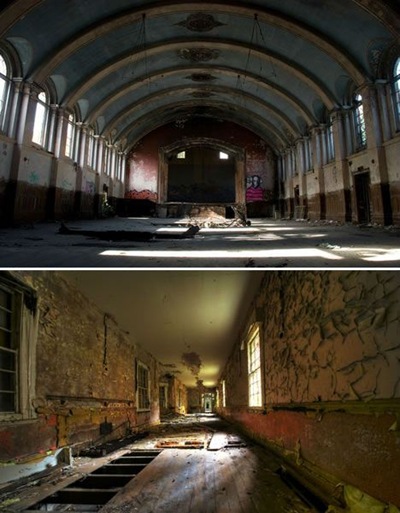




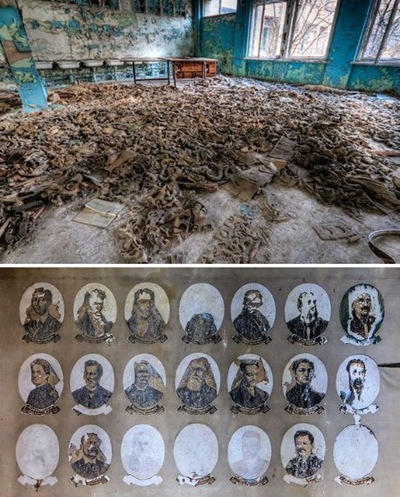

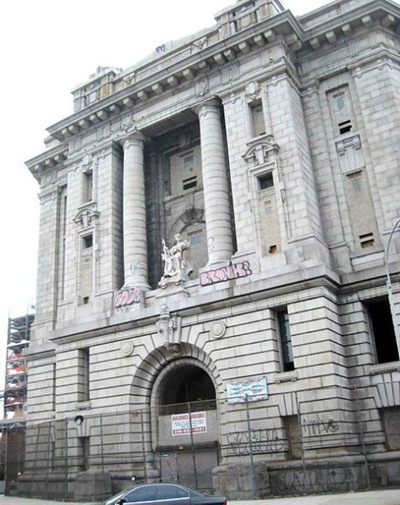
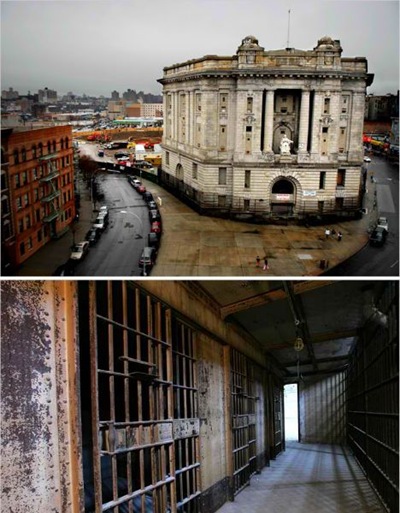
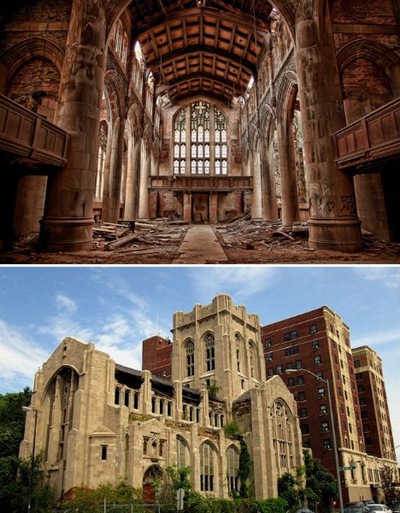

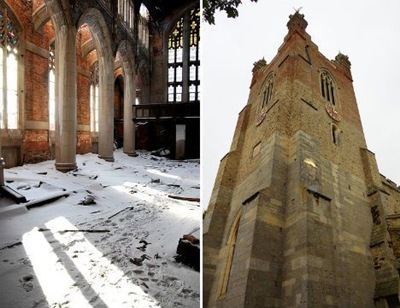
No comments:
Post a Comment
Please adhere to proper blog etiquette when posting your comments. This blog owner will exercise his absolution discretion in allowing or rejecting any comments that are deemed seditious, defamatory, libelous, racist, vulgar, insulting, and other remarks that exhibit similar characteristics. If you insist on using anonymous comments, please write your name or other IDs at the end of your message.